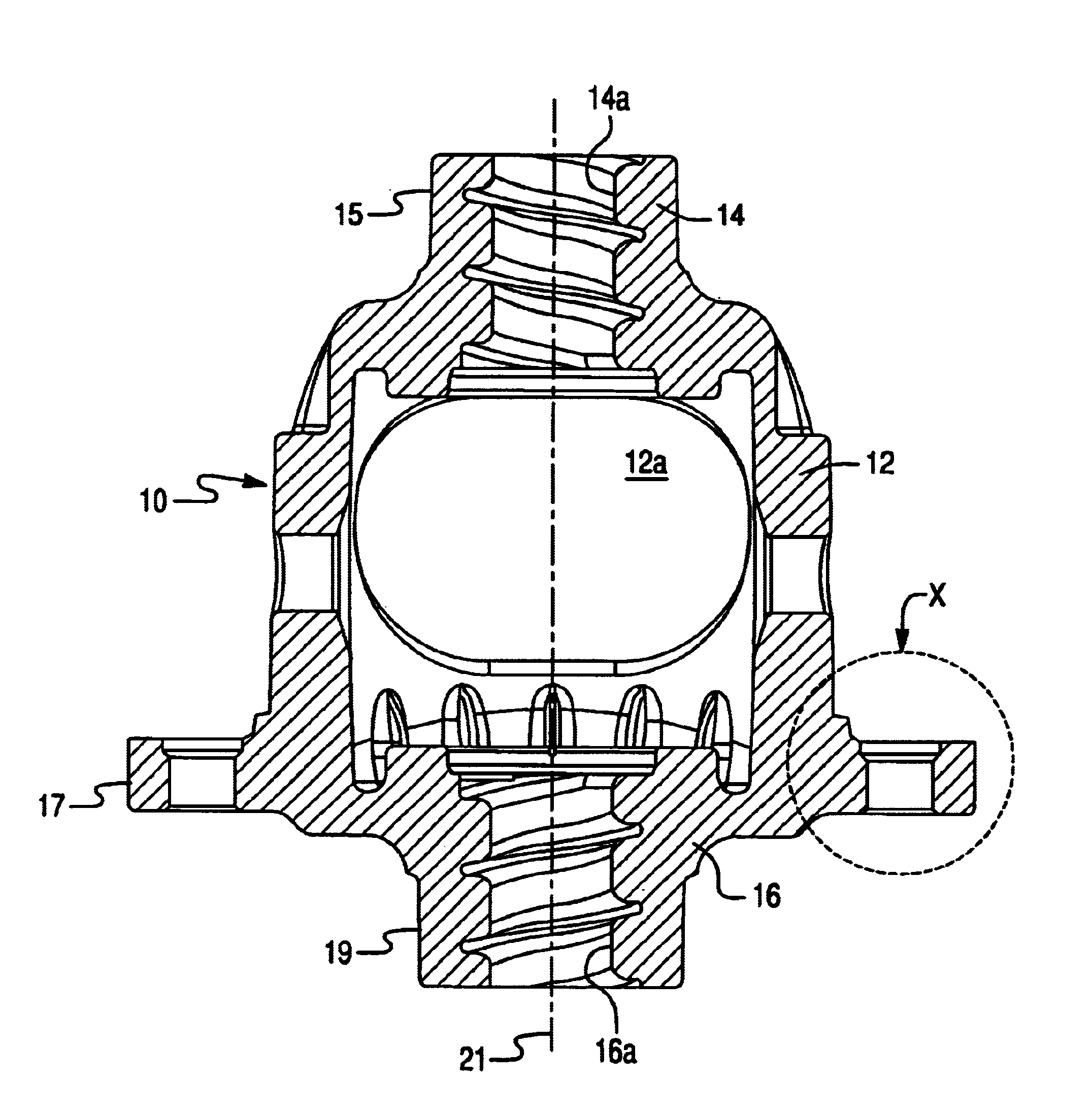Full mold casting process and device for a differential case with cast-in bolt holes
a technology of differential case and mold casting process, which is applied in the direction of foundry molds, metal-working equipment, foundry patterns, etc., can solve the problems of only possible mold division, mold joint defects, and not all types of models can be molded
- Summary
- Abstract
- Description
- Claims
- Application Information
AI Technical Summary
Benefits of technology
Problems solved by technology
Method used
Image
Examples
Embodiment Construction
[0030]With reference to FIG. 1, the invention is a method for making a differential case metal casting. The method comprises the step of providing an in situ destroyable foam pattern 10 as shown in FIGS. 1-10 to form an integral one-piece differential case casting of the desired shape identical also to the product shown in FIGS. 1-10. The pattern has a hollow body including a substantially annular central wall section 12 and axially spaced side wall sections 14, 16 adjacent to opposite ends of the central wall section 12 forming an internal cavity within the hollow body of the foam pattern. See FIG. 4. The pattern (and, thus, the differential case) includes two sets of pass-through openings 20, 30 on the side wall sections 14, 16 of the hollow body of the pattern adjacent to the respective opposite end of the central wall section 12.
[0031]In the subsequent step of the method, the mold pattern is embedded in unbonded sand so that the unbonded sand is at least partially introduced int...
PUM
 Login to View More
Login to View More Abstract
Description
Claims
Application Information
 Login to View More
Login to View More - R&D
- Intellectual Property
- Life Sciences
- Materials
- Tech Scout
- Unparalleled Data Quality
- Higher Quality Content
- 60% Fewer Hallucinations
Browse by: Latest US Patents, China's latest patents, Technical Efficacy Thesaurus, Application Domain, Technology Topic, Popular Technical Reports.
© 2025 PatSnap. All rights reserved.Legal|Privacy policy|Modern Slavery Act Transparency Statement|Sitemap|About US| Contact US: help@patsnap.com



